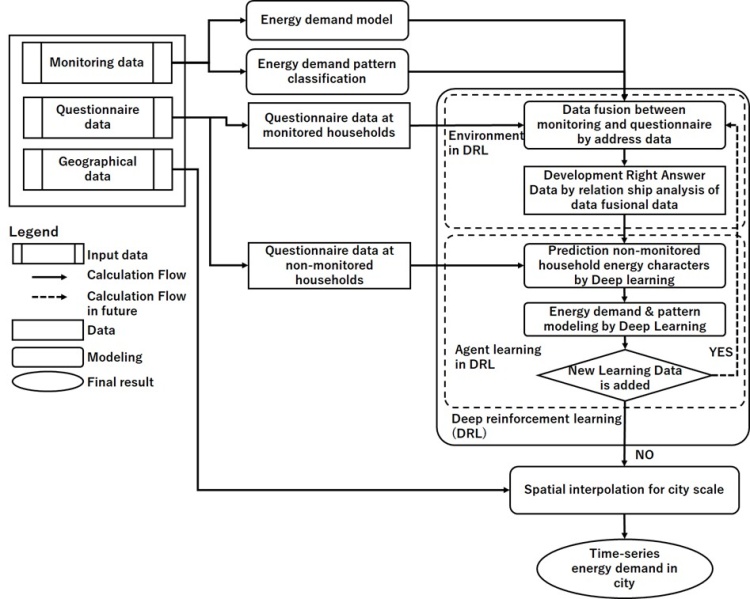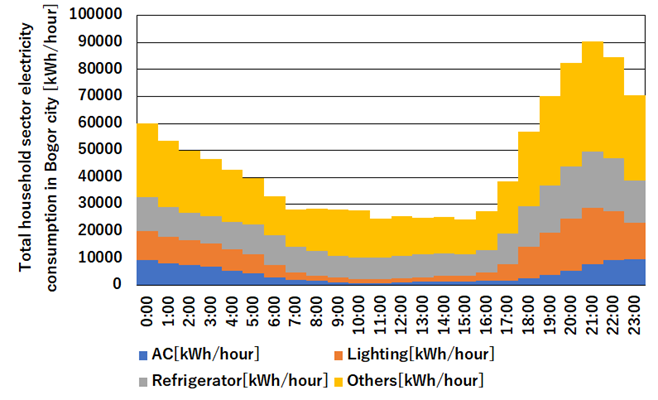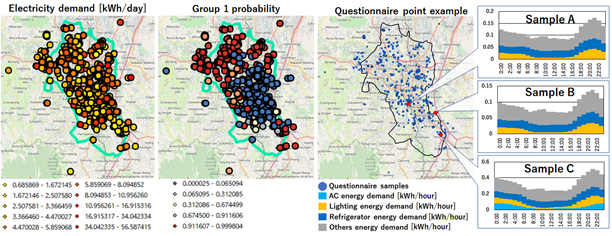Information of Paper
A deep reinforced learning spatiotemporal energy demand estimation system using deep learning and electricity demand monitoring data
Authors:Seiya Maki, Minoru Fujii, Tsuyoshi Fujita, Yasushi Shiraishi, Shuichi Ashina, Kei Gomi, Lu Sun, Sudarmanto Budi Nugroho, Ryoko Nakano, Takahiro Osawa, Gito Immanuel, Rizaldi Boer
Year:2022
Journal:Applied Energy, Volume 324, 15 October 2022 , 119652
Keywords
Energy monitoring, Deep Learning, Data Fusion, Deep Reinforcement Learning, Bayesian Kriging method, Indonesia
Abstract
According to the Paris Agreement adopted at COP21, the participating developing and developed countries are required to take more aggressive actions for adapting to—and mitigating—global warming. COP26 (Glasgow, 2021) made the achievement of the 1.5 °C target and decarbonization a more explicit goal. In this background, reduction of energy consumption and strengthening the transparency are becoming more important.
Mitigating actions in energy supply and demand are one of the key elements for achieving net-zero emissions; many developing countries face difficulties understanding their current energy needs, and their supply and demand. Monitored energy consumption will be a basis for effective policy formulation with regard to energy saving and carbon reduction measures in developing countries, and there have been several efforts to develop systems for monitoring electricity consumption. Past studies had classified the electricity consumption and patterns of households with monitoring device installed. However, these data were only for individual households, and it is important to be able to estimate the electricity consumption and its patterns for households that are not monitored based on these data in order to determine the actual electricity consumption of the entire city. Expanding the system to the entire city or region is expected to yield a better and more detailed understanding of the electricity consumption patterns. However, it is difficult to expect immediate increases in the number of monitored households as installing these systems is expensive.
It is difficult to readily obtain a sufficient number of samples for this method, because privacy protection the economic and opportunity costs are high when monitoring electricity consumption by installing measuring equipment in distribution boards, as in this study. Then, detailed data such as sequential time data obtained from monitoring systems should be extended with a larger number of data by spatial interpolation such as the Kriging method. However, monitoring household numbers were also shorted for spatial interpolation methods.
“Data fusion” is a method that increases the number of data types by integrating another type data and supplementing missing data based on the common variables between missing data and another type data.
In this study, we conducted a questionnaire survey of multiple households, including the monitored households, and generated data that mimicked the data corresponding to the monitored households through data fusion. In addition, it is necessary to develop a method that can be applied to the Kriging method to amplify point data to obtain the relevant information for the entire city.
However, it is not appropriate to build a model based only on the data from this study, as the imitated data are based on a small number of monitoring points. Therefore, it is necessary to have an automatic improvement function with the increase of data in the future.
We established an automatically accommodating system by increasing the data, thus in the future, it would be possible to estimate electricity consumption for the entire city. This system would also provide basic information for engendering discussions on where the devices could be installed to further decarbonize the city. Therefore, we developed a deep reinforcement learning system that predicts and estimates time-series energy demands and automatically improves the associated model when the theoretical sample size increases upon using continuously monitored data. This methodology is considered to be particularly important as the basis for monitoring and managing actual energy demands in developing countries, where such statistics are not readily available.
We carried out our study in Bogor city, Indonesia. We developed a multi-step analysis sequence in our deep reinforcement learning system as a base for monitoring data from each device, and questionnaire responses for each household in the target city. In summary, we: 1) analyzed energy demands and discrete time patterns using monitored data, 2) surveyed many households (including those monitored) using questionnaires, 3) estimated energy demands and patterns based on the combination of monitored data and questionnaire responses from monitored households, 4) developed a deep learning model that extends the results from 3), 5) monitored mimic-data development from only the households that received questionnaires using data fusion, and 6) performed spatial interpolation of energy demand characteristics across all households by using mimic data in Bogor using spatial statistics (Fig.1).

It is necessary to increase the number of households to be monitored in the future, the construction of this model by deep learning enabled us to develop a tool that could analyze mimic data from relatively easy-to-obtain data methods such as questionnaires. Fig. 2 shows estimation results from this estimation system and three picked up household mappings.
Fig. 3 shows the results of the integration of spatially interpolated energy demand, energy pattern, and device ownership data on all households in Bogor city. We estimated spatial interpolations of the energy demand, energy demand patterns, and device ownership using the Bayesian Kriging method, successfully estimating the daily household energy demand fluctuations in Bogor city. Therefore, it is probable that this estimation system using deep learning can be used for estimating energy demand at the city scale, based on a small amount of detailed data, from sources such as monitoring data.
In the future, the usefulness of this system can be further enhanced and generalized by increasing the number of monitoring sites and with the construction of a database. Additionally, the Bayesian Kriging method parameters were visually determined. Further evaluation of the neighboring semi-variogram fitting and automatic spatial interpolation settings is needed for better automation. The system established in this study would be used to support the decarbonization plans of local governments and assist them in planning the site of survey.






